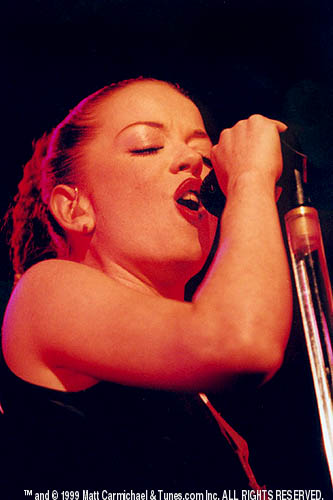|
The seeds for Garbage (vocalist Shirley Manson, guitarists Steve Marker and Duke Erikson and drummer Butch Vig) were first sown when Vig moved to Madison, Wis., to study at the University of Wisconsin in the early '80s. After two years of school, he dropped out to play drums in the band Spooner. Raised in the dairy farm community of Viroqua, Wis., Vig found common ground with Spooner's vocalist/guitarist Duke Erikson, who was raised in rural Nebraska. Steve Marker, a University of Wisconsin film student raised in upstate New York, was a fan of Spooner and helped them record their songs on a four-track he had bought with money he earned mowing lawns. In 1984 Vig and Marker invested in an eight-track and a warehouse and Smart Studios was born. After releasing three albums of garage rock, Spooner mutated into Firetown and continued to record at Smart. Vig and Marker made their living by recording local punk bands for $100 bucks a single. Soon Smart Studios became a popular breeding ground for indie rockers. Labels like Sub Pop, Touch and Go, Slash and Twin Tone all sent their top artists to record at the Madison facility. In the early '90s Vig made his mark producing some of the most groundbreaking albums of the grunge/alternative movement, including Nirvana's Nevermind, Sonic Youth's Dirty and the Smashing Pumpkins' Gish and Siamese Dream. In 1993 Vig, Erikson and Marker found themselves working together on remixes for bands like Nine Inch Nails and House of Pain. An impromptu jam session led to the birth of Garbage. The three producers experimented endlessly in the basement of Smart Studios, working to extract the strangest noises from their instruments that they could. Things could have continued on this way forever, but one night in 1994 Vig was watching MTV when a video by a band called Angelfish came on. The singer was a stunning redheaded Scottish beauty named Shirley Manson and Vig knew that she was the voice of Garbage. Manson, an Edinburgh native, started her music career playing keyboards and singing backup vocals in Goodbye Mr. Mackenzie before fronting Angelfish. She agreed to interview with Vig, Marker and Erikson. According to the band, the first meeting was awful. "She was nervous and we were nervous," said Marker, "and it was a disaster." But they still knew she was the one. "She had the balls to come back," said Vig. "The last thing we wanted was somebody we could manipulate. To some of the lyrics she'd go, 'I can't sing this bloody crap!'" The name for the new band came when a friend was visiting them while recording at Smart Studios. He listened to the innumerable loops and noise and said "This sounds like garbage!" Replied Vig, "Exactly, and we're going to turn this garbage into a song." Garbage spent a year preparing their 1995 eponymous debut, released on Almo Sounds. Garbage met with enormous critical and commercial success based on the strength of singles like "Vow," "Queer," "Only Happy When it Rains" and "Stupid Girl." The album has sold 4 million copies to date. Hot on the heels of the album's success, Garbage appeared on the Romeo and Juliet soundtrack in 1996 with a B-side, "Number One Crush." The song topped the alternative charts, and the band earned three Grammy nominations. In April 1997, after two years of touring, Garbage finally started to work on their sophomore album. With three perfectionist producers in the band, it's not surprising that much of the time in the studio was spent recording, re-recording, then recording some more. Songs continued to evolve throughout the recording sessions, often ending far from where they began. "If we didn't have to, we probably would never stop," said Duke. "It's like a painting, you can put on as many layers as you want and keep changing it. Then people keep reminding us that we have to put a record out. Sooner or later we have to let other people hear it." The second album, Version 2.0, was released May 12, 1998.
|

 Part pop band, part noise experiment, Garbage has seen their popularity explode since the release of the eponymous 1995 debut album.
Part pop band, part noise experiment, Garbage has seen their popularity explode since the release of the eponymous 1995 debut album.




